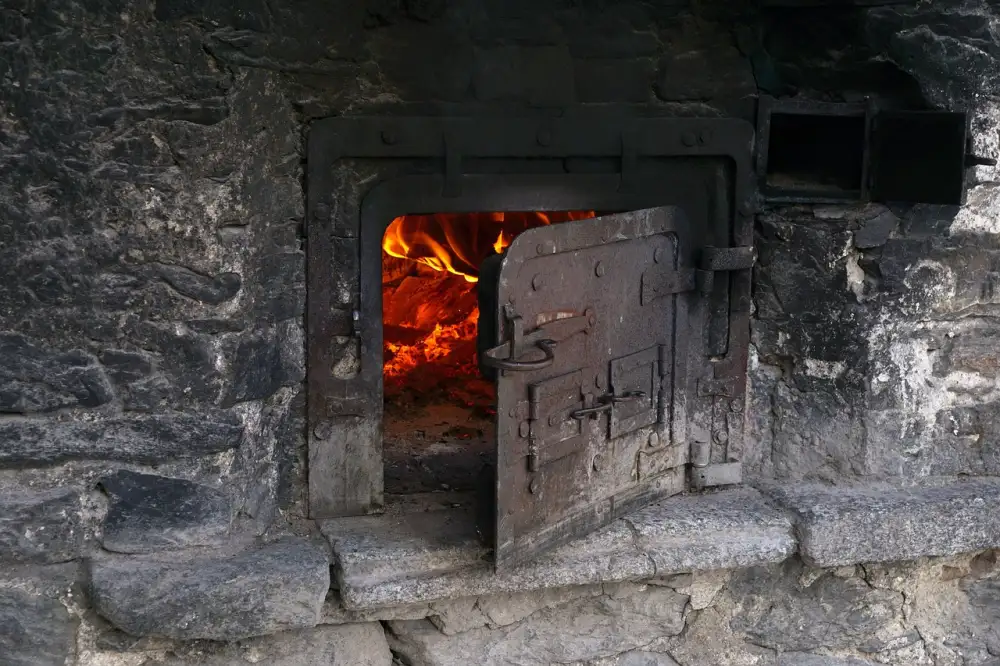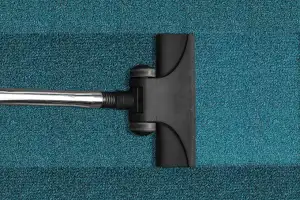Mastering the Art of Cooking: A Step-by-Step Guide on How to Use a Convection Oven at Home

Convection ovens have revolutionized the way we cook, offering faster and more efficient results compared to traditional ovens. They use a fan and exhaust system to circulate hot air evenly throughout the oven cavity, ensuring that food cooks more quickly and evenly. This technology not only saves time but also enhances the flavor and texture of your dishes. Whether you're a seasoned chef or a beginner in the kitchen, mastering the art of cooking with a convection oven will open up a whole new world of culinary possibilities. In this step-by-step guide, we will explore the basics of convection cooking and provide you with valuable tips on how to make the most out of your convection oven at home. Get ready to elevate your cooking skills and create mouthwatering meals that will impress your family and friends!
Understanding the Basics of Convection Cooking
Convection cooking is a method that utilizes the circulation of hot air to cook food more efficiently and evenly. Unlike traditional ovens, which rely on radiant heat from heating elements, convection ovens have a fan that circulates the hot air throughout the oven cavity.
This circulating air helps to distribute heat more evenly, resulting in faster cooking times and more consistent results. The fan also helps to remove moisture from the food, creating a crispy exterior while keeping the interior moist and tender.
One important thing to note is that convection cooking requires lower temperatures than conventional cooking. This is because the circulating air transfers heat more efficiently, so you can typically reduce the temperature by about 25 degrees Fahrenheit when using the convection setting.
It's also worth mentioning that convection cooking is not suitable for all types of dishes. Delicate items like soufflés or custards may not fare well in a convection oven as the circulating air can cause them to deflate or become unevenly cooked. However, for most other recipes, especially those that benefit from browning or crisping, convection cooking is a game-changer.
By understanding these basics of convection cooking, you'll be able to make the most out of your convection oven and elevate your culinary creations to new heights.
Preparing Your Convection Oven for Use
Before you start cooking with your convection oven, it's important to make sure it's properly prepared. Here are a few steps to follow:
1. Read the Manual: Familiarize yourself with the specific instructions and features of your convection oven by reading the manual. This will help you understand how to operate it safely and efficiently.
2. Clean the Interior: Before using your convection oven for the first time, clean the interior thoroughly. Remove any packaging materials, stickers, or protective films. Wipe down the surfaces with a damp cloth and mild detergent to remove any dust or residue.
3. Check the Accessories: Take a look at the accessories that came with your convection oven, such as racks or trays. Ensure they are clean and in good condition before using them.
4. Preheat the Oven: Preheating is crucial for achieving consistent cooking results. Set your convection oven to the desired temperature and allow it to preheat fully before placing any food inside.
By following these steps, you'll ensure that your convection oven is ready for use and that you'll get optimal results from your cooking endeavors.
Adjusting Cooking Times and Temperatures
Adjusting cooking times and temperatures is an important aspect of using a convection oven. Since convection ovens circulate hot air evenly, they tend to cook food faster than traditional ovens. As a general rule, you can reduce the cooking time by about 25% when using the convection setting. However, it's crucial to keep an eye on your food and check for doneness regularly to avoid overcooking. Additionally, you may need to lower the temperature by about 25 degrees Fahrenheit compared to what a recipe suggests for conventional baking. This adjustment ensures that your food cooks evenly without becoming too dry or burnt. Remember, experimenting with different recipes and keeping track of adjustments will help you become more confident in adjusting cooking times and temperatures with your convection oven.
Using the Convection Setting for Baking
When it comes to baking in a convection oven, the convection setting can be a game-changer. It allows for even heat distribution and faster cooking times, resulting in perfectly baked goods every time.
To use the convection setting for baking, start by preheating your oven to the desired temperature. Most recipes will require you to reduce the temperature by 25 degrees Fahrenheit when using the convection setting. This is because the circulating hot air in the oven cooks food faster than traditional baking methods.
Next, prepare your baking pan or sheet as usual. However, keep in mind that convection ovens tend to cook more evenly, so you may need to adjust your cooking time accordingly. It's always a good idea to check your baked goods a few minutes before the recommended cooking time is up.
One of the key benefits of using the convection setting for baking is that it helps achieve a crispy and golden crust on breads and pastries. The hot air circulation creates a dry environment that promotes browning and caramelization.
However, it's important to note that delicate items like soufflés or cakes with light batters may not fare well in a convection oven. The strong airflow can cause them to deflate or become unevenly cooked. In such cases, it's best to stick with conventional baking methods.
Remember to rotate your pans halfway through baking to ensure even browning and cooking. This is especially important if you're using multiple racks in your convection oven.
By using the convection setting for baking, you'll be able to enjoy evenly cooked and beautifully browned baked goods in less time than traditional methods. So go ahead and experiment with your favorite recipes – you'll be amazed at the difference this setting can make!
Roasting and Broiling with a Convection Oven
Roasting and broiling are two popular cooking methods that can be easily mastered with a convection oven. When roasting, the hot air circulation in the oven ensures even cooking and browning of meats and vegetables. To achieve the best results, use a roasting pan with low sides to allow for proper airflow.
For broiling, the convection setting is ideal as it helps to quickly sear and brown the food while keeping it juicy on the inside. Place the food on a broiler pan or a wire rack set over a baking sheet to allow excess fat to drip away.
When roasting or broiling with a convection oven, it's important to adjust the cooking time and temperature accordingly. The hot air circulation can speed up cooking times, so reduce the recommended time by about 25% and keep an eye on your food to prevent overcooking.
To ensure even browning, rotate the pan halfway through cooking. This will help all sides of your food cook evenly and develop a delicious golden crust.
Remember to use lower temperatures when using convection for roasting or broiling compared to traditional ovens. Lowering the temperature by about 25 degrees Fahrenheit will prevent your food from drying out while still achieving that desired crispy exterior.
With practice and experimentation, you'll soon become adept at roasting succulent meats and vegetables and achieving perfectly caramelized tops on dishes like casseroles or gratins. Enjoy exploring new flavors and textures with your convection oven!
Tips for Successful Convection Cooking
1. Use the right cookware: Opt for shallow pans and baking sheets with low sides to allow for proper airflow. Avoid using dark or nonstick pans as they can absorb too much heat.
2. Preheat your oven: Unlike traditional ovens, convection ovens require preheating to ensure even cooking. Allow your oven to reach the desired temperature before placing your food inside.
3. Reduce cooking time: Convection cooking is known for its efficiency, so be sure to reduce the cooking time by about 25%. Keep a close eye on your food to prevent overcooking.
4. Rotate and rearrange: To ensure even browning and cooking, rotate your pans halfway through the cooking process. You can also rearrange the shelves if needed.
5. Lower the temperature: As convection ovens circulate hot air, you may need to lower the temperature by 25°F (15°C) compared to traditional recipes. This adjustment prevents burning or drying out your dishes.
6. Don't overcrowd: Allow sufficient space between items on baking sheets or in pans to promote proper air circulation. Overcrowding can lead to uneven cooking and longer cook times.
7. Use a thermometer: Invest in a good quality kitchen thermometer to accurately gauge the internal temperature of meats and baked goods. This ensures that they are cooked thoroughly without being overdone.
8. Monitor delicate foods: Delicate foods like cakes, soufflés, and custards may rise faster in a convection oven due to increased airflow. Keep an eye on them during baking and adjust accordingly.
9. Shield with foil if needed: If you notice that certain parts of your dish are browning too quickly, cover them with aluminum foil to prevent burning while allowing the rest of the dish to continue cooking.
By following these tips, you'll be well on your way to mastering the art of convection cooking and enjoying delicious, evenly cooked meals every time.
Cleaning and Maintaining Your Convection Oven
Cleaning and maintaining your convection oven is essential to ensure its longevity and optimal performance. Here are some tips to keep your oven in top shape:
1. Regularly clean the interior of the oven using a mild detergent and warm water. Avoid using abrasive cleaners or scrub brushes that can damage the oven's surface.
2. Remove any spills or food debris immediately after each use to prevent them from hardening and becoming difficult to remove later on.
3. Clean the oven racks separately by soaking them in warm, soapy water. Scrub off any stubborn stains with a non-abrasive sponge or brush.
4. Wipe down the exterior of the oven with a damp cloth to remove any grease or fingerprints. Avoid using harsh chemicals that may damage the oven's finish.
5. Check and clean the ventilation system regularly to ensure proper airflow and prevent any blockages that could affect cooking performance.
6. Replace or clean the oven filter as recommended by the manufacturer, usually every few months, to maintain good air circulation inside the oven.
7. Inspect the door gasket for any signs of wear or damage, such as cracks or gaps. Replace it if necessary to maintain an airtight seal.
By following these cleaning and maintenance practices, you can enjoy your convection oven for years to come while ensuring delicious results every time you cook.
In conclusion, mastering the art of cooking with a convection oven opens up a whole new world of culinary possibilities. By harnessing the power of hot air circulation, you can achieve perfectly cooked dishes with enhanced flavors and textures.
The benefits of convection cooking are numerous. Not only does it cook food faster and more evenly, but it also allows for healthier cooking as less oil is needed. The convection setting is particularly useful for baking, creating beautifully golden and evenly risen cakes, cookies, and pastries.
Roasting and broiling in a convection oven result in juicy meats with crispy exteriors. The hot air circulation ensures that every part of the dish is cooked to perfection. With some adjustments to cooking times and temperatures, you can achieve restaurant-quality results right in your own kitchen.
To enjoy the benefits of convection cooking, make sure to properly prepare your oven for use and adjust cooking times accordingly. Experiment with different recipes and techniques to fully explore the capabilities of your convection oven.
Remember to clean and maintain your convection oven regularly to ensure optimal performance. This will prolong its lifespan and keep it functioning at its best.
So why not take your cooking skills to the next level by embracing the wonders of convection cooking? With practice and a little experimentation, you'll be able to create delicious meals that will impress even the most discerning foodies. Happy cooking!
Published: 12. 12. 2023
Category: Home



